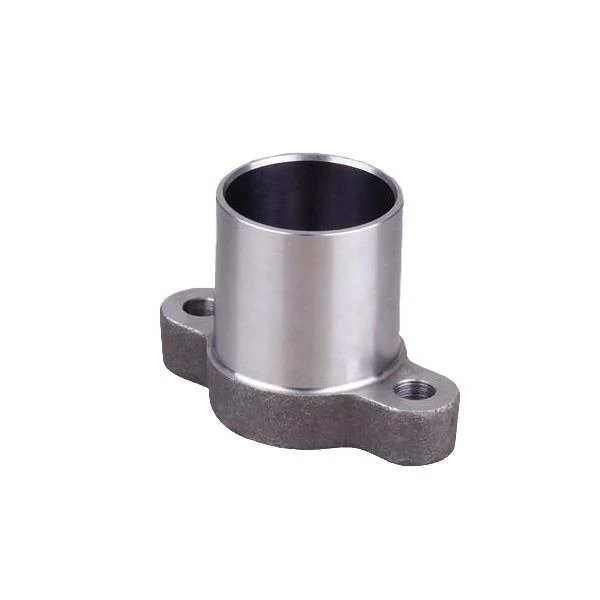die casting step by step
Step-by-Step Guide to Die Casting
Die casting is a manufacturing process that involves forcing molten metal into a mold cavity under high pressure. This method is widely used for producing complex shapes with high dimensional precision and excellent surface finish, making it an essential process in various industries, including automotive, aerospace, and electronics. In this article, we will explore the die casting process step-by-step, providing a comprehensive understanding of how this innovative method works.
Step 1 Designing the Mold
The first step in the die casting process is mold design. Engineers and designers create a detailed plan for the mold, taking into consideration the desired shape, dimensions, and material of the final product. The mold is typically made from high-quality steel or aluminum to withstand the high pressures and temperatures during the casting process. The design phase often involves careful consideration of draft angles, parting lines, and cooling channels to ensure efficient casting and easy removal of the final product.
Step 2 Melting the Metal
Once the mold design is complete, it is time to prepare the metal. Common materials used in die casting include aluminum, zinc, magnesium, and copper alloys. The chosen metal is heated in a furnace until it reaches a molten state, allowing it to flow easily into the mold cavity. It is crucial to maintain the correct temperature throughout the melting process, as overheating can affect the quality of the final product.
Step 3 Injecting the Metal
After the metal has been melted, it is injected into the mold. This is done using a die casting machine that can generate significant pressure, often exceeding 10,000 psi. The molten metal is forced into the mold through a nozzle, filling the cavity quickly and evenly. This high-pressure injection helps in achieving intricate designs and sharp details that might be difficult to accomplish with other manufacturing methods.
Step 4 Cooling and Solidification
die casting step by step

Once the mold is filled, the molten metal needs time to cool and solidify. The cooling rate can be controlled by introducing cooling channels within the mold, enhancing the efficiency of the process. As the metal solidifies, it takes the shape of the mold, forming the final product. The cooling time can vary based on the type of metal used and the thickness of the part being cast.
Step 5 Ejection of the Casting
After sufficient cooling time has elapsed, the next step is to eject the casting from the mold. The die casting machine uses ejector pins to push the solid metal piece out of the mold cavity. This process requires precision to avoid damaging the newly formed part. Proper ejection is crucial for maintaining the overall quality and integrity of the casting.
Step 6 Finishing Processes
While die casting produces high-quality parts, additional finishing steps may be necessary to achieve the desired surface finish and functionality. Common finishing processes include trimming excess metal, machining for precise dimensions, applying surface treatments, and painting or coating to enhance corrosion resistance and aesthetics. These steps help ensure that the final product meets both visual and functional specifications.
Step 7 Quality Control
Finally, quality control is an essential part of the die casting process. Manufacturers typically conduct inspections at various stages, including mold design, during casting, and after finishing. Common quality checks include dimensional measurements, visual inspections for defects, and mechanical testing to evaluate strength and durability.
In conclusion, die casting is a highly effective manufacturing process that combines precision engineering with efficient production techniques. By following the above steps, manufacturers can produce high-quality components that meet the demands of modern industries. As technology advances, the die casting process continues to evolve, offering new possibilities for innovation and efficiency in manufacturing.
-
OEM Sand Cast Pump Valve Fittings - Baoding Hairun | Precision Engineering, CustomizableNewsJul.30,2025
-
OEM Sand Cast Pump Valve Fittings - Baoding Hairun Machinery And Equipment Trading Co., Ltd.NewsJul.30,2025
-
OEM Sand Cast Pump Valve Fittings - Baoding Hairun Machinery And Equipment Trading Co., Ltd.NewsJul.30,2025
-
OEM Sand Cast Pump Valve Fittings - Baoding Hairun Machinery|Precision Engineering&Fluid ControlNewsJul.30,2025
-
OEM Sand Cast Pump Valve Fittings - Baoding Hairun Machinery And Equipment Trading Co., Ltd.NewsJul.30,2025
-
OEM Sand Cast Pump Valve Fittings-Baoding Hairun Machinery And Equipment Trading Co., Ltd.NewsJul.30,2025















